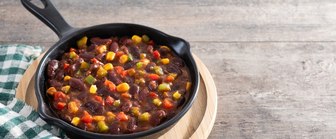Democratic President Barack Obama continues to hold a solid, if dwindling lead in Pennsylvania over Republican challenger Mitt Romney, 51% Obama to 44% Romney, in a YouGov poll of 967 likely voters statewide (recontacted from an initial September poll).
| In Pennsylvania (Oct 4-11): |
|---|
Pennsylvania’s commonwealth is characterized by strong partisan loyalties, with 92% of Democrats sticking with Obama and 90% of Republicans voting for Romney. |
Romney easily wins the majority of the vote among likely voters who are Independents, 56% Romney-35% Obama. |
Women favor Obama by a wide 59%-34% margin, while men favor the challenger, 52% Romney-45% Obama. |
Obama is the consensus choice in Philadelphia, enjoying an 81%-19% lead there among likely voters, and the President also holds a solid advantage in the Philadelphia suburbs (52% Obama-42% Romney), as well as in the west (51%-46%). The race is close in the northeast (49% Romney-48% Obama), while Romney runs strongest in central Pennsylvania, 52% Romney-39% Obama. |
The oldest likely voters age 65+ favor Romney by a huge margin over Obama (60% Romney-39% Obama), and Romney also leads among Pennsylvania’s Baby Boomers (52% Romney-45% Obama). But Obama leads 2-to-1 (65%-32%) among those age 30-44, and by a bigger margin among the youngest voters. |
Romney has made strides among Pennsylvania’s likely voters who are Independents, rising from a strong 53%-36% lead in September with this key swing group to an even stronger 56%-35% among these same likely voters today. |
| Net Change in Voter Intention (Likely Voters) |
|---|
| Total | Independents | |||
|---|---|---|---|---|
Sept 7-14 | Oct 4-11 | Sept 7-14 | Oct 4-11 | |
Barack Obama | 52% | 51% | 36% | 35% |
Mitt Romney | 43% | 44% | 53% | 56% |
Incumbent Democratic Senator Bob Casey Jr. holds a 48%-41% lead over Republican Senate challenger Tom Smith, little-changed from Casey's 46%-38% lead among these same likely voters in September.
Likely voters in Pennsylvania are now turning their attention to the race for U.S. Representative for their Congressional districts, and it’s a close race, with 43% intending to vote for the Democratic candidate for the House in their district, and 40% for the Republican. The poll was conducted online October 4-11.
Sampling method: Respondents were initially selected on September 7-14 from YouGov’s panel using sample matching. A random sample (stratified by age, gender, race, education, and region) was selected from the 2005–2007 American Community Study. Voter registration, turnout, religion, news interest, minor party identification, and non-placement on an ideology scale, were imputed from the 2008 Current Population Survey Registration and Voting supplement and the Pew Religion in American Life Survey. Matching respondents were selected from the YouGov panel, an opt-in Internet panel.
Respondents were recontacted on October 4-11 for the second wave of the YouGov poll. The percentage of likely voters who were successfully recontacted was 85.8%.
Weighting: The sample was weighted using propensity scores based on age, gender, race, education, news interest, voter registration, and non-placement on an ideology scale.
Number of respondents: 967 likely voters. Margin of error ±4.3% (adjusted for weighting).
Click here for September 7-14 results (registered voters).
Click here for October 4-11 results (likely voters).








